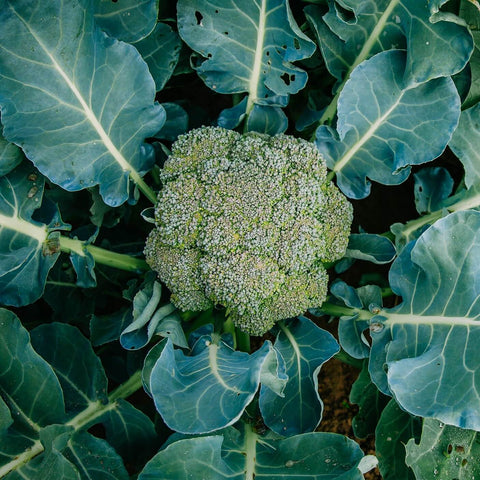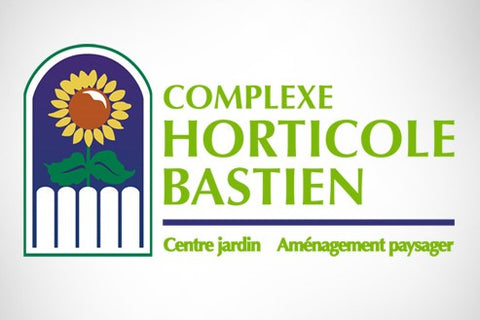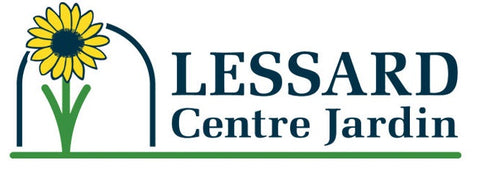

Hortinova
CALABRESE - Open Pollinated Heirloom Broccoli Seeds
Brassica oleracea var. italica
- Late maturity: 85 – 90 days.
- Large sized head.
- Heirloom variety of Italian origin
- Rich flavor.
- Open-pollinated seeds.
- Natural, Untreated, Non-GMO Seeds.
Broccoli seeds are capable of germinating in soil temperatures as low as 40°F (4°C), but warmer soil is preferred and will greatly speed up development.
For spring plantings, broccoli may be started indoors or outdoors a few weeks ahead of your last spring frost date. Start seeds indoors 6 to 8 weeks before your last frost date and plant transplants that are 4 to 6 weeks old (and have 4 or 5 leaves) outdoors, 12 to 20 inches apart, in holes slightly deeper than their container depth. Sow seeds outdoors 2 to 3 weeks before your last frost date, or as soon as the soil can be worked in the spring by sowing seeds 1/2-inch deep and 3 inches apart.
For fall plantings (best in warm climates), sow seeds outdoors 85 to 100 days before the first fall frost, when soil and ambient temperatures are high.
THIN: Once seedlings reach a height of 2 to 3 inches, thin them so that plants are 12 to 20 inches apart.
TRANSPLANT: If you started seeds indoors, plant seedlings that are 4 to 6 weeks old (and have 4 or 5 leaves) outdoors, 12 to 20 inches apart, in holes slightly deeper than their container depth. Space rows of broccoli 3 feet apart. (Closer spacing yields smaller main heads, but more secondary heads.) Water well at the time of planting. To increase fertility before you plant, in early spring, work in 2 to 4 inches of rich compost (humus) or a thin layer of manure. The soil pH should ideally be slightly acidic, between 6.0 and 7.0. Broccoli should be planted in a site that gets full sun (6 to 8 hours of sunlight per day). Plant in a bed of moist, fertile soil that drains well.
TEMPERATURE: Broccoli is a cool-season crop, so it should be started in early- to mid-spring (depending on your climate) for an early summer crop, or in mid- to late summer for a fall crop. High temperatures will affect development of the broccoli head (the harvestable part), so the goal is to get broccoli to mature before or after high temperatures are expected.
WATER AND FEED: Fertilize broccoli three weeks after transplanting seedlings into the garden. Use a low-nitrogen fertilizer, such as a 5-10-10 formula. Provide consistent soil moisture with regular watering, especially in drought conditions. Water at least 1 to 1 1/2 inches per week. Do not get developing broccoli heads wet when watering, as it can encourage rot. To promote the growth of a second head after the first has been harvested, maintain an active feeding and watering schedule.
PROTECT: Roots are very shallow, so try not to disturb the plants. Suffocate weeds with mulch. Mulching around plants will also help to keep soil temperatures down. Use row covers to minimize pests.
Harvest broccoli in the morning, when the buds of the head are firm and tight, just before the heads flower. If you do see yellow petals, harvest immediately, as the quality will decrease rapidly. Cut heads from the plant, taking at least 6 inches of stem. Make a slanted cut on the stalk to allow water to slide away. Most varieties have side-shoots that will continue to develop after the main head is harvested. You can harvest from one plant for many weeks, in some cases, from spring to fall, if your summer isn’t too hot.
Let customers speak for us
from 23 reviewsWe grow several varieties of various colours of tomatoes, and the contrast of these tomatoes with other colours is fantastic. We've had a very long season with our plants, excellent disease resistance, great flavour.

This review applies to all of the seeds I purchased from Hortinova - beautiful tomatoes, good disease resistance and excellent production. Our field season extended to 10 weeks. We've had comments of excellent flavour from our customers as well, highly recommend any Hortinova seed.

This tomato is good taste tomato. Small red round tomato. Bigger then cherry tomatoes but smaller then regular one. I like it. Perfect for salads and fresh eating. Ordered seeds for next season.

2nd time ordering. Very satisfied with qualify and result. Thank you

BALCONY YELLOW F1 - Hybrid Cherry Tomato Seeds

Delivered very fast, packed very good, in professional condition and quality. Thanks

DUETT - Open Pollinated Radish Seeds

We will see what they are like this summer.

Type crimson de bonne grosseur avec une superbe uniformité et très hâtif. Un des premiers prêt en saison. Semences très petites et peu nombreuses. Goût très sucré et chaire croquante. Chair passant du rose au rouge en cours de saison. Les plants sont forts et très vigoureux avec des grosses feuilles.

Vigueur des plants impressionante avec des fruits résistants aux fissures et aux dommages. Très bonne conservartion et goût très sucré lorsque les nervures deviennent orange. Peu être récolté lorsque les nervures sont vertes également. Cavité des semences très compacte et petite laissant beaucoup de chair.

Melon qui fond en boûche avec un goût se rapprochant du melon miel et du cantaloup à la fois, très sucré. Faire attention aux irriguations lorsque le melon devient mature car il peut fendre au champs. Très odorant.

Avec son apparence côtellée, son très gros calibre et ça couleur rose, cette tomate se démarque des autres sur les tablettes. Variété plus résistante à la pourriture apicale que la plus part des autres tomates roses. Bon ensemble de résitance aux maladies également.

Tomate noire dont les faces qui ne sont pas exposé au soleil passent du vert au rouge lorsque mature donnant un aspect unique aux fruits. Charactéristiques similaires à la Barrio avec un goût superbe sans acide. Les clients l'on adoré.

Superbe adaptabilité et excellente résistance aux maladies. Fruits uniformes qui ne fendent pas, bonne conservation. Ajoutez à cela un goût unique avec une légère acidité et une pointe sucré.















